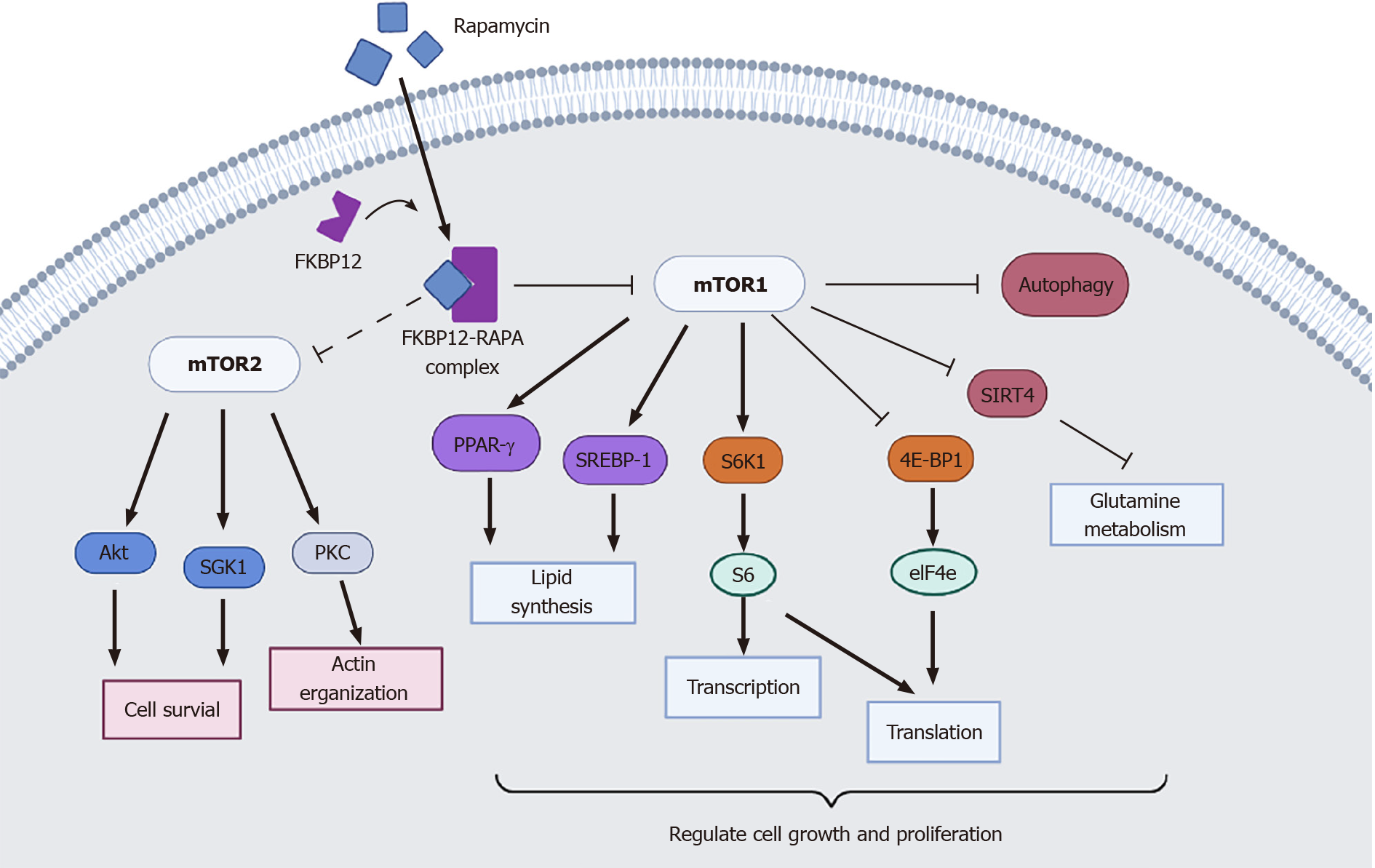Copyright
©The Author(s) 2021.
World J Gastrointest Surg. Sep 27, 2021; 13(9): 953-966
Published online Sep 27, 2021. doi: 10.4240/wjgs.v13.i9.953
Published online Sep 27, 2021. doi: 10.4240/wjgs.v13.i9.953
Figure 1 Regulatory mechanism of rapamycin on mammalian target of rapamycin signaling.
Rapamycin (RAPA) inhibits mammalian target of rapamycin (mTOR) by binding to its intracellular receptor FK506-binding protein-12. mTOR exists in two functionally distinct complexes, termed mTORC1 and mTORC2. RAPA acutely inhibits mTORC1, while the mTORC2 is affected by chronic exposure. Activated mTORC1 promotes cell growth and proliferation by regulation of lipid synthesis and glutamine metabolism and inhibition of autophagy, and it also could promote mRNA translation by stimulating 4e binding protein 1 (4E-BP1) and inhibiting 4E-BP1. mTORC2 regulates actin cytoskeletal dynamics and cell survival through the above pathways. RAPA: Rapamycin; mTOR: Mammalian target of rapamycin; FKBP12: FK506-binding protein-12; S6K1: S6 kinase 1; 4E-BP1: 4e binding protein 1; PKC: Protein kinase C; PPAR: Peroxisome proliferator-activated receptors.
- Citation: Zhao Y, Liu Y, Zhou L, Du GS, He Q. Trends of rapamycin in survival benefits of liver transplantation for hepatocellular carcinoma. World J Gastrointest Surg 2021; 13(9): 953-966
- URL: https://www.wjgnet.com/1948-9366/full/v13/i9/953.htm
- DOI: https://dx.doi.org/10.4240/wjgs.v13.i9.953









